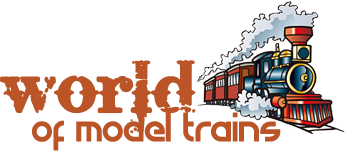HO SCALE MODEL TRAINS
The best thing about model trains is that they come in many different sizes. The more technical term for this is ‘scale’ which means a ratio or proportion of the original train of whose replica is being created. HO is one such example of the model train scale and is one of the most popular model train scales in the world.
There are also in turn, different standards of the HO scale. According to the NMRA standard S-1.2, which is majorly employed in North America, the ratio of the HO scale comes to about 1:87.1 , whereas in the MOROP standard NEM 010 majorly employed in Europe, there is a minor difference and the ratio come to be precisely 1:87. The rails are commonly spaced 15.5 millimeters (equivalent to about 0.65 inches) apart in the HO scale.
Today’s HO model trains run on a system of dual-rail tracks. These are powered by direct current (DC), and their speed can be slowed down or accelerated by changing the amount of voltage applied. Another way through which the HO model trains are powered is that digital commands are sent to a decoder in every locomotive. This method is called the digital command control. However, there are some HO model trains that draw inspiration from manufacturer Märklin, and run on alternating current (AC). A third rail acts as the power source.
A huge factor that comes into play where HO model trains are concerned is availability. Because there is so much demand for the HO scale, different kinds of kits, supplies and versions are easily available both at physical stores and online websites that offer delivery. K. Walthers is North America’s biggest model train and railway set merchant. A quick fact to demonstrate this is that their annual HO scale catalog for model trains features more than one thousand pages of different model train products.
One of the major reasons why the HO scale is so popular is the fact that it is large enough to have details and intricate designs incorporated in it to make for a fine product. It is larger than the N and Z scales, and this also makes it suitable to be used to young children without the fear of choking on small parts. The manufacturing process involved in making such small scales like N and Z is tedious and exacting. It is much cheaper to produce than the G, O and S scales because it is a smaller scale than these three, and so uses fewer raw materials. It is produced in large numbers and parts are easily available. The tracks occupy just the right amount of room space, not too much and not too little. It is a balance between the N and Z scales, and the S and O scales.
However, there is still quite a bit of price variation involved in the HO scale as well, as a result of quality. For example, trains made with plastic moulds that are more than half a century old have different prices in comparison to the ones that are made of brass and sold in limited numbers by companies in Japan and Korea.




